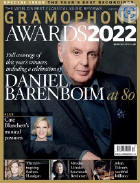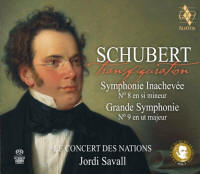Texte paru dans: / Appeared in: |
|
|
Outil de traduction |
|
|
Schubert can hardly be thought to have become caught up in anniversary fervour but a generous production of symphonic recordings has attended the period around his 225th anniversary on January 31 this year. Both Heinz Holliger and Herbert Blomstedt have offered latecareer thoughts on the Eighth and Ninth that join the octogenarian Boult’s reading of the Ninth (Warner Classics, 12/72) in offering performances borne of a lifetime’s consideration of these still-startling works. On period instruments, Michi Gaigg produced a Ninth that crowned a festival cycle of the seven and a half symphonies, bringing ‘tireless propulsion and infectious fervour’ (as I noted at the time) to this masterpiece. Most recently, René Jacobs completed his cycle with a frustratingly uneven Eighth and Ninth that, for all his customary scrutiny and provocation, didn’t quite pull together as fully cogent interpretations. Following on swiftly from a highly acclaimed Beethoven cycle, Jordi Savall and Le Concert des Nations now offer a period-instrument coupling that combines the best of all these worlds. Mark Pullinger identified a ‘sinewy, almost abrasive quality’ to the strings in the second instalment of their Beethoven (2/22), which is appreciably reprised here, situating these works very much in Beethoven’s Vienna rather than viewing it from the other end of the telescope, as a portent of later 19th-century developments. The forces are fairly substantial by period-band standards, with 10 each of first and second violins, the regular personnel of Le Concert des Nations augmented, as in their Beethoven, with ‘jeunes participants à l’Académie Schubert’ – international players at the outset of their careers. One may notice occasional minute lapses in intonation but the power of these readings is such that the overall effect is barely marred. The ‘Great’ C major is brought to life in all its moods, with due appreciation of its expansiveness but without stinting on the opportunity to let the multiplicity of accents and sforzandos really bite. The ensemble remains solid even in the motoric, stamina-sapping string figures that propel the finale of the Ninth. The Unfinished is presented as a satisfying two-movement closed form, in contrast to Jacobs’s open-ended reading, which seemed to imply the need for a scherzo and finale. For a persuasive period-instrument recording of these two great works that nevertheless takes nothing for granted, this may well now be the ideal choice.
|
|




